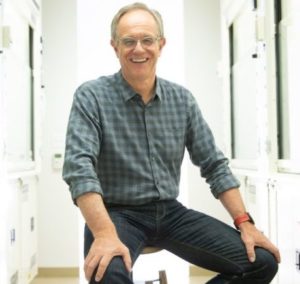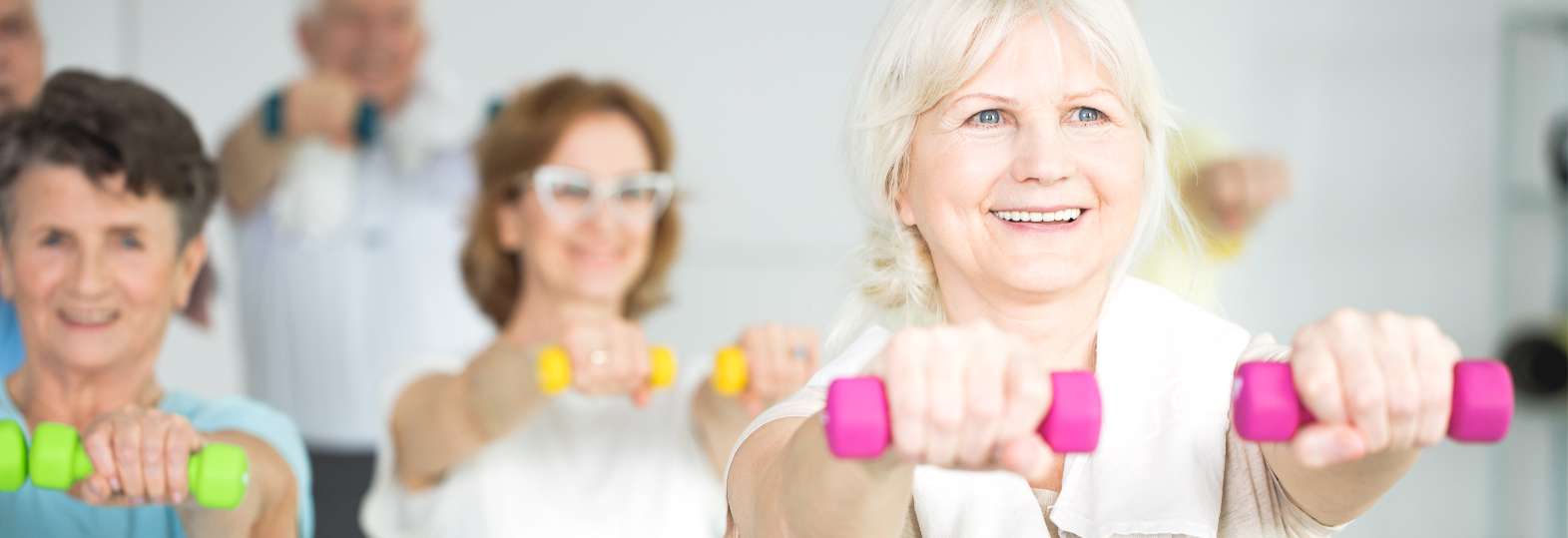by Buck Institute
April 23, 2019 . BLOG
Some Evidence-Based Answers to Your Frequently-Asked Questions: A 3-Part Series
Part 1: Exercise and Aging

By Eric Verdin, President and CEO of the Buck Institute
We get a lot of questions about the lifestyle changes people should make to enhance their longevity and healthspan. We love these questions because they are evidence of the growing interest in aging biology and the Buck’s important role in this field. While everyone’s biology is a little different and we can’t provide specific health advice to any individuals (see your physician for those answers), we can tell you the simplest, evidence-based lifestyle changes that you can make to live better longer are exercise and diet. This is the first in a three part series that will cover the known benefits of exercise and the promise of research into different dietary changes, including what is yet to be uncovered.
What are the health benefits of exercise during aging and how much should I do?
By now we have probably all heard that exercise is good for us, and we should be doing more of it. The Buck was among the first to report that exercise is important for healthy aging. In a 2007 study, Buck professor Dr. Simon Melov found that the gene expression signature of older adults took on a more youthful profile after 6 months of resistance exercise training. Numerous studies since have shown that incorporating exercise into our daily lives can help lead to healthier aging. Routine exercise is associated with a huge variety of health benefits during the aging process. These include retained muscle mass and enhanced immune system, decreased weight gain, maintenance of healthy cholesterol and blood pressure levels, brain health, and overall reduced risk of developing chronic disease in healthy people during aging. In fact, exercise has been shown to combat each of the major hallmarks of aging, leading to improved nutrient sensing and intercellular communication! This is important because it suggests that exercise actually shifts the cellular environment in our bodies to a healthier, more youthful state.
Exercise and physical activity also improve both quality of life and treatment for patients with chronic diseases of aging including arthritis, heart disease, and diabetes, and may slow the progression of neurodegenerative diseases such as Alzheimer’s. A recent report that combined data from 19 different studies found that regular aerobic exercise was associated with improved cognition over time for individuals with Alzheimer’s disease or at risk of it, while a control group that did not exercise demonstrated reduced cognitive function over time. Basically, exercise, as long as it is done safely and in a way that protects you from injury or over-exertion (see a personal trainer or physical therapist if you are just starting out or want specific recommendations), is probably the best bet for seeing health benefits without any real health risk.
So how much exercise is enough and what kinds of exercise should you do? The National Institute on Aging (NIA) suggests building up to 30 minutes a day, most to all days of the week, of moderate physical activity, meaning activity which makes you breathe harder and elevates your heart rate such as brisk walking, light weight lifting, and yoga. NIA emphasizes incorporating all four areas of exercise into your routine: endurance, strength, balance, and flexibility. Check out their website, Go4Life, for exercise examples and more information.
5 Tips from the NIA
- Try to build up to at least 30 minutes of activity that makes you breathe hard on most or all days of the week.
- Keep using your muscles.Keeping your muscles in shape helps prevent falls that cause problems like broken hips. You are less likely to fall when your leg and hip muscles are strong.
- Do things to help your balance. Try standing on one foot, then the other. If you can, don't hold on to anything for support. Get up from a chair without using your hands or arms. Every now and then walk heel-to-toe. As you walk, put the heel of one foot just in front of the toes of your other foot. Your heel and toes should touch or almost touch.
- Stretching can improve your flexibility. Moving more freely will make it easier for you to reach down to tie your shoes or look over your shoulder when you back the car out of your driveway. Stretch when your muscles are warmed up. Don't stretch so far that it hurts.
- Don't hold your breath during strength exercises. That could cause changes in your blood pressure.It may seem strange at first, but you should breathe out as you lift something and breathe in as you relax.
While lifelong exercise is the best way to combat age-related health decline, it’s never too late to start. In fact, beginning an active lifestyle later in life can still have benefits! A recent study found that moderate, regular exercise in middle-to-older aged adults can reverse damage to sedentary, aging hearts and help prevent the risk of future heart failure.
The entire Buck family takes the benefits of exercise seriously, and our staff finds ways to “fit in fitness” into their daily routines. For some, this means walking or biking up our infamous driveway each morning. They have the added challenge of waving off friendly coworkers offering them a ride up! Others spend a few minutes walking briskly around the campus during lunch or fitting in a quick workout at our onsite gym. Regardless of intensity or duration, our team knows that more activity is better than less and incorporates movement into their daily routines.
There is a lot still to be uncovered about how exercise combats aging at the cellular level. A better understanding of the cellular signals activated by different types of exercise will go a long way toward identifying specific workouts that can act as “prescriptions” for specific conditions or health concerns. This can also help researchers uncover pathways that might work in concert with pharmaceutical interventions to maximize the health-promoting benefits of exercise. Here at the Buck we will keep working on this and working out. Until then, happy moving!

SHARE